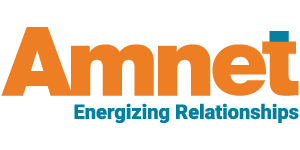While the changes represented by e-books, audio books, POD, and digital delivery (e.g., Cengage and Pearson’s higher-education digital offerings) are indeed significant, there are also clear signs that third-party distribution services are growing in importance. They offer publishers a viable and potentially business-saving alternative for reducing fixed costs and focusing limited resources on the publisher’s primary business—content selection and development.
As the third quarter of 2019 draws to a close, news from the book publishing industry continues to be mixed, at best. The current environment is unique for many reasons. The challenges go beyond the implications of a potential recession: the book industry is working to address and embrace changes in business models that have been in place for decades.
E-books, while a minority of the industry’s total revenues, are gaining ground in terms of both revenue and mindshare, while down-loaded audio content continues to deliver meteoric growth rates. As equipment capabilities improve and prices drop, print-on-demand (POD) technology has evolved from a specialty niche to a commodity service.
Publishers increasingly accept the argument that “cash is king” and unit manufacturing costs matter little if the books in question don’t sell. Digital book manufacturing has become a permanent and growing presence in the portfolio of publisher options.
The publishing community faces an increasingly current complex landscape: a steadily more powerful Amazon, Barnes & Noble owned by private equity, a shrinking share of sales through bricks-and-mortar retail outlets, open education resources as a credible alternative to traditional textbooks, and text-book rental programs being offered through the publishers. That’s just part of the complexity.
Developments such as these require that publishers take a broader view of the opportunities and risks in the current economic environment and the limits on resources. The traditional view of outsourcing held by many organizations is much like the industry’s longtime “holy grail”—the hunt for the lowest unit manufacturing cost—i.e., the only justification for outsourcing is if it significantly reduces the publisher’s operating costs.
There are other ways to look at outsourcing, notably: its impact on cash flow (a constraint faced by even the largest publishers); the growing importance of emerging technologies such as e-book delivery and POD; and the pressure to improve service levels as the time-in-process for orders decreases steadily. A more informed, longer-term evaluation of the rewards and risks of outsourcing distribution should be a required element of any strategic planning process.
Is Your Organization a Candidate for Distribution Outsourcing?
The decision to outsource distribution is a significant one. The request for proposal (RFP) and vendor-evaluation processes, and the creation of the business case for review with senior management, require a comprehensive understanding of an organization’s business policies, workflows, unique functional requirements, current and prospective transaction volume, strategic goals and a view to the potential changes facing your organization in the years ahead (e.g., shrinking college enrollments, use of Open Educational Resources increases)
As part of an annual business-planning process, every publishing organization should ask six fundamental questions about its distribution operations. Forthright answers to these questions can guide a leadership team in evaluating whether outsourced distribution is something to seriously consider:
In the context of an outsourcing evaluation, we define “core competencies” as those functions that your organization does supremely well and that provide a significant cost and/or competitive advantage. “Distribution” can be defined to include sales, marketing, revenue/order intake, fulfillment, returns processing, credit and collections, customer service, and inventory management (including remaindering and inventory disposal). Which of these functions, if any, are your organization’s core competencies? If you cannot credibly link your revenues or demonstrable cost advantages to the quality of the individual services you provide, the activity may be a candidate for outsourcing.
Disclaimer: This is to inform readers that the views, thoughts, and opinions expressed in the article belong solely to the author, and do not reflect the views of Amnet.
Copyright © 2022 Amnet. All rights reserved. No part of this publication may be reproduced, distributed, or transmitted in any form or by any means, including photocopying, recording, or other electronic or mechanical methods, without the prior written permission of the publisher, except in the case of brief quotations embodied in critical reviews and certain other non-commercial uses permitted by copyright law.
